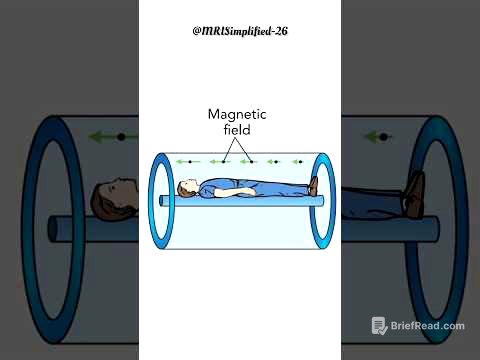TLDR;
This video provides a comprehensive overview of the chapter on gravitation for NEET (National Eligibility cum Entrance Test) aspirants. It covers Kepler's laws, universal law of gravitation, acceleration due to gravity and its variations, gravitational potential energy, escape velocity, orbital velocity, and energy considerations for satellites. The lecture includes explanations of key concepts, derivations of important formulas, and problem-solving sessions with multiple-choice questions.
- Kepler's Laws
- Universal Law of Gravitation
- Gravitational Potential Energy
- Escape and Orbital Velocities
Kepler's Laws [0:17]
Kepler's first law states that planets revolve around the Sun in elliptical orbits, with the Sun at one of the foci. The second law, or the law of areas, explains that a planet sweeps out equal areas in equal intervals of time, which is based on the law of conservation of angular momentum. Mathematically, this is represented as ΔA/Δt = L / 2m, where L is the angular momentum and m is the mass of the planet. The third law, or the law of periods, indicates that the square of the time period of revolution of a planet is directly proportional to the cube of the semi-major axis of its orbit.
Problems Based on Kepler's Laws [8:28]
Several problems are solved using Kepler's laws. One question relates the law of areas to the conservation of angular momentum, expressing the area swept out by a planet in terms of its mass, velocity, and time interval. Another problem involves comparing the kinetic energies of a planet at different points in its elliptical orbit. The video also addresses how the time period of a planet's revolution changes with its radius, applying Kepler's third law to find the new time period when the radius is altered. Additionally, the time period of a satellite orbiting at a certain height above the Earth's surface is calculated using Kepler's third law.
Universal Law of Gravitation [15:41]
The universal law of gravitation states that the force between two masses, M1 and M2, separated by a distance R, is directly proportional to the product of their masses and inversely proportional to the square of the distance between them. Mathematically, F = G * M1 * M2 / R², where G is the universal gravitational constant (6.67 x 10^-11 Nm²/kg²). Gravitational force is attractive in nature. For a system of multiple masses, the net force on one mass is the vector sum of the forces due to all other masses.
Problems Based on Universal Law of Gravitation [20:25]
The video includes problem-solving based on the universal law of gravitation. One question involves finding the relationship between the force between a planet and a star and the time period of the planet's orbit. Another problem calculates the height at which the weight of a body becomes 1/16th of its weight on the Earth's surface. Additionally, the net force on a mass placed at the centroid of an equilateral triangle with equal masses at its vertices is computed.
Acceleration Due to Gravity [29:28]
Acceleration due to gravity (g) is derived using Newton's law of gravitation. The formula is g = GM/R², where G is the gravitational constant, M is the mass of the Earth, and R is the radius of the Earth. Mass can also be expressed in terms of density (ρ) and volume (V), leading to g = (4/3)πGρR. The video explains how 'g' varies with altitude and depth. The acceleration due to gravity at altitude h is given by g_h = g(1 - 2h/R), and at depth d, it is g_d = g(1 - d/R).
Problems Based on Variation of Gravity [33:26]
Several problems are solved to illustrate the variation of gravity. One question calculates the altitude at which the acceleration due to gravity decreases to 4.9 m/s². Another problem determines the gravitational force on a body at a height equal to half the Earth's radius. The video also includes a question on the variation of acceleration due to gravity from the center of the Earth to points far away, and another on how much a body will weigh halfway down to the center of the Earth. Additionally, the depth at which the acceleration due to gravity is the same as at a certain height above the Earth is calculated.
Gravitational Potential Energy and Field [42:33]
Gravitational potential is defined as the amount of work done to bring a point mass from infinity to a specific point, given by V = -GM/R. Gravitational potential energy is U = -GMm/R. Gravitational field intensity (E) is the force per unit mass, E = GM/R², and is a vector quantity. The gravitational field and potential due to a spherical shell are also discussed, noting that the field inside a hollow sphere is zero.
Problems Based on Gravitational Potential Energy [49:36]
The video solves problems related to gravitational potential energy. One question involves calculating the gravitational potential energy of a system of particles. Another problem calculates the work done to raise a mass m from the surface of the Earth to a height H equal to the radius of the Earth. Additionally, the height above the Earth's surface is calculated using given values of gravitational potential and acceleration due to gravity.
Escape Speed and Orbital Velocity [56:54]
Escape velocity is the minimum speed required for an object to escape from Earth's gravitational field, given by V_escape = √(2GM/R). Orbital velocity is the velocity required for an object to maintain a stable orbit around a celestial body, given by V_orbital = √(GM/(r+h)). The relationship between escape velocity and orbital velocity is V_escape = √2 * V_orbital. The video also covers the kinetic energy, potential energy, and total energy of a satellite, as well as its angular momentum and time period.
Geostationary and Low Altitude Satellites [1:03:47]
Geostationary satellites have a time period of 24 hours and orbit at a height of approximately 35,800 km. Low altitude satellites rotate in a north-south direction, while the Earth rotates in an east-west direction.
Problems Based on Escape Velocity and Orbital Motion [1:06:12]
The video includes several problems related to escape velocity and orbital motion. One question examines how escape velocity changes if the Earth's radius contracts to 1/4 of its original value while keeping the mass constant. Another problem calculates the approximate radius to which Earth would have to be compressed to become a black hole. The video also addresses the acceleration of a satellite in an elliptical orbit and calculates the escape velocity on the Moon given the Earth's escape velocity and the Moon's mass and radius relative to Earth. Finally, the ratio of escape velocities between Earth and another planet with different radius and mean density is determined, and the ratio of kinetic energies of two satellites in different circular orbits is calculated.









